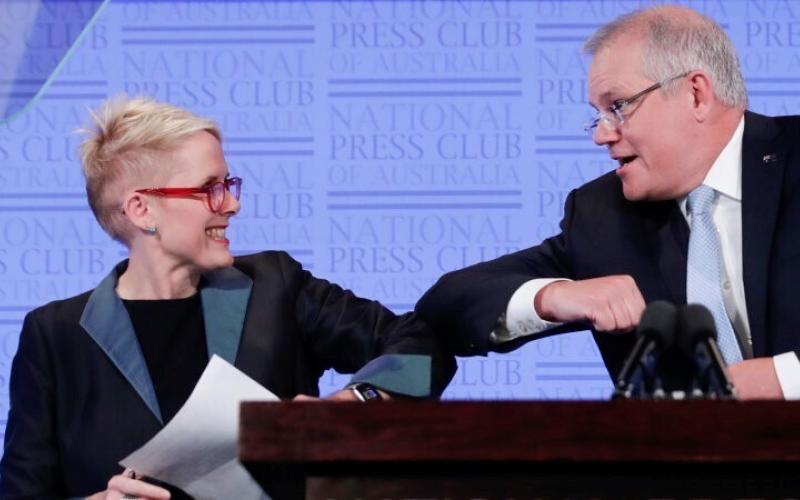The ubiquitous elbow bump
When COVID hit, our prime minister decided we should stop shaking hands and use an elbow bump as a greeting instead. Watching this manouevre over the last few months, it has come to look more and more awkward, staged and unnatural and I suspect that part of that awkwardness comes from it being a very unnatural movement. It also has negative significance for our shoulders and necks.
Some basic thoughts about why this movement looks so awkward and unnatural:
Watch the prime minister – his normal forward head posture becomes exaggerated and his shoulder girdle is hitched up, such that it looks like he is jamming his shoulder under his ear and poking his chin out in front of him. This is not just the prime minister – I am not picking on him – it is just that he is the one we see on the media doing the elbow bump more than anyone else.
Consider ‘normal’/ideal shoulder elevation – when you lift your arm up above shoulder height, ideally, your shoulder blade (scapula) rotates upwards so that the top of your arm bone (humerus) slides comfortably under the bony arch (acromion). If you lift your arm in the ‘shoulder bump’ position, this movement does not occur. Instead, your scapula tends to rotate downwards, with the potential for the structures that lie between these two bones to become jammed/pinched and potentially lead to irritation and pain in this region (the subacromial space). Depending on your natural posture, the elbow bump manouevre may also cause the structures at the front of the shoulder – the tendons of subscapularis and long head of biceps – to become squashed.


Equally, in the elbow bump action, there is a tendency for you to poke your chin forwards, jamming up the little joints at the top of your neck, possibly also causing pain in this region and headaches through the side of your head.
So far, most of us are not ‘elbow bumping’ all that often, so not likely to cause much of a problem, but it is something we should consider from the perspective of ‘neck/shoulder health’.
I would like to propose that, if we have to have some form of touch to replace a handshake, instead of a prime ministerial elbow bump, we adopt the ‘forearm bump’, or ‘vertical elbow bump’, two biomechanically improved forms of bump, and ones that have far fewer implications for pain in the shoulder and neck than the Scott Morrison elbow bump.
What is a ‘forearm bump’/’vertical elbow bump’? I have called the movement that allows us to touch the outside edge of our forearms to each other a ‘forearm bump’ or, if we need to keep the term ‘elbow bump’ we modify it to become the ‘vertical elbow bump’.
Why might this be a better move than a prime ministerial elbow bump? It is a much better movement for your shoulder and neck because…
- Your shoulder blade will upwardly rotate as you would like it to do
- Your shoulder joint is in a position that opens that subacromial space, rather than closing it, reducing the risk of any kind of impingement.
- Your neck muscles will not be activated with this movement, therefore, reducing the risk of irritating your neck each time you greet someone.
- It is a more natural movement
This suggestion may seem frivolous, but the movement patterns we develop and practice become habitual and, if less than ideal for the structures involved, can, over time, lead to significant impairments in the associated structures, causing pain and dysfunction.
As a Specialist Shoulder Physiotherapist, I see many people with painful problems they identify as associated with their shoulder. In a large proportion of these people, observation of their movement patterns shows a tendency to move their arm in internal rotation (thumb down position), leading to jamming of the structures underneath the acromion, as described above, potentially causing pain. If I modify this position by asking them to move with their thumb on top (like a hitchhiker), frequently their pain on movement is reduced or eliminated. If I manually assist their scapula to rotate upwards instead of downwards, again, there is often a significant reduction in symptoms. When I observe these movement patterns and the change for the better with the simple concept of ‘thumbs up, not thumbs down’, my treatment will include a strong focus on teaching them strategies to move with the ‘thumbs up’ approach and to strengthen the muscles that allow this to occur.
Therefore, I would like to encourage all of you to consider replacing your handshake with a forearm bump rather than an elbow bump, as a way to look after the health of your neck and shoulder tissues but still acknowledging the person you are greeting in a friendly way.
Happy forearm bumping!
